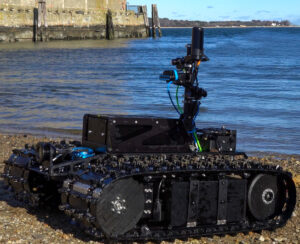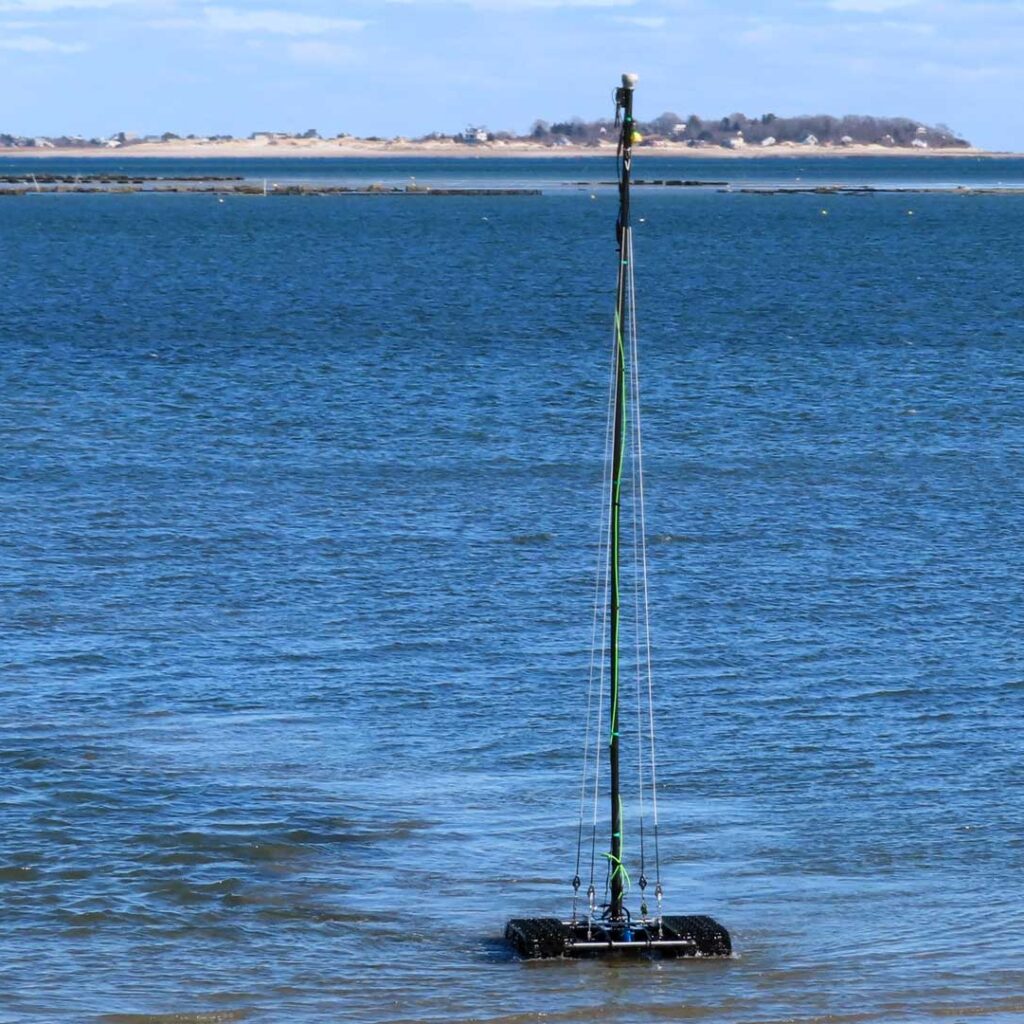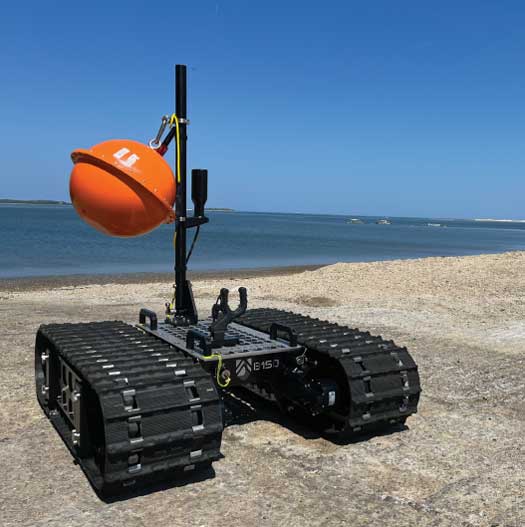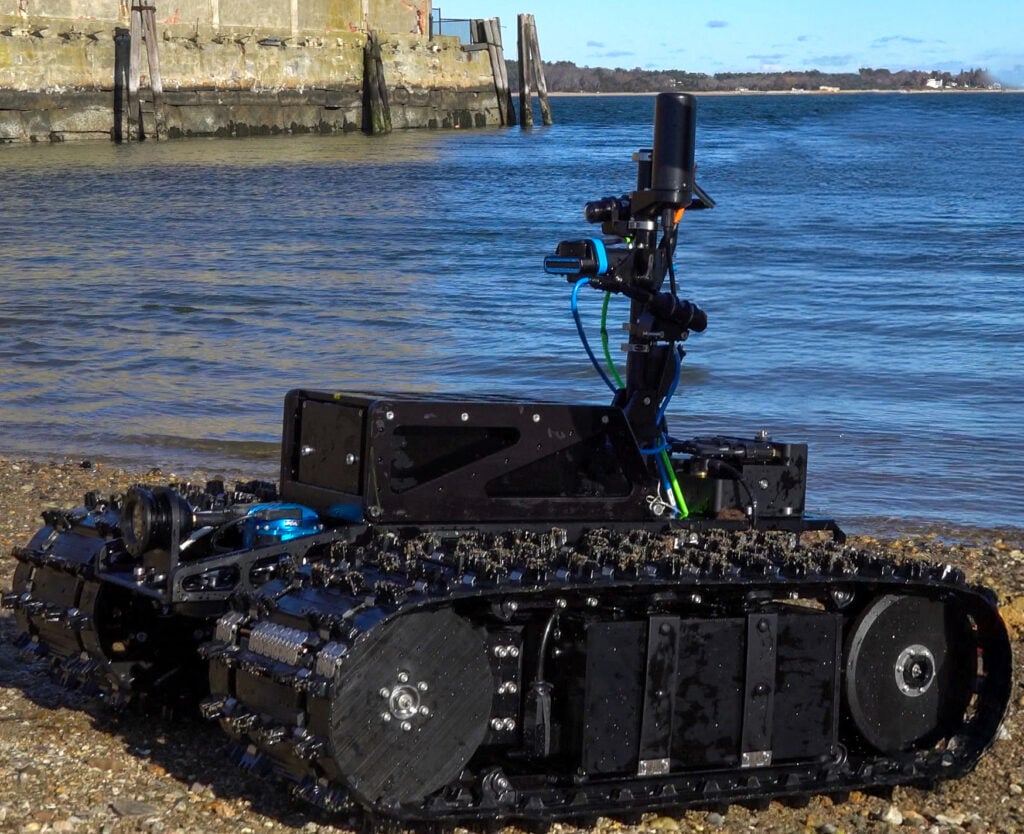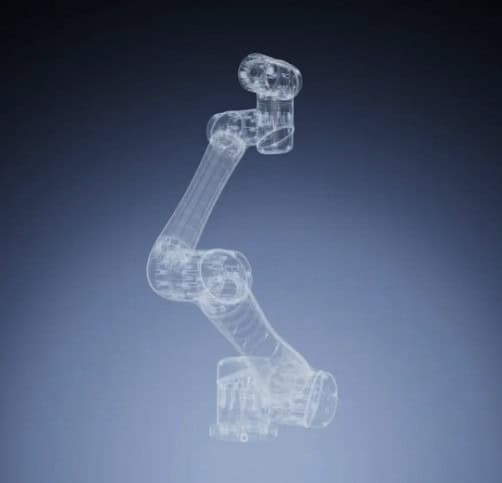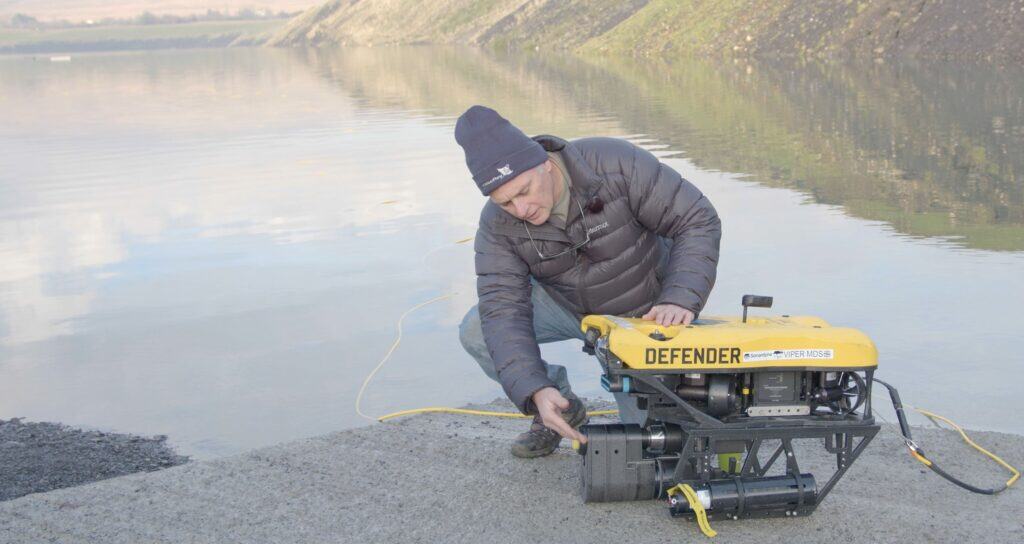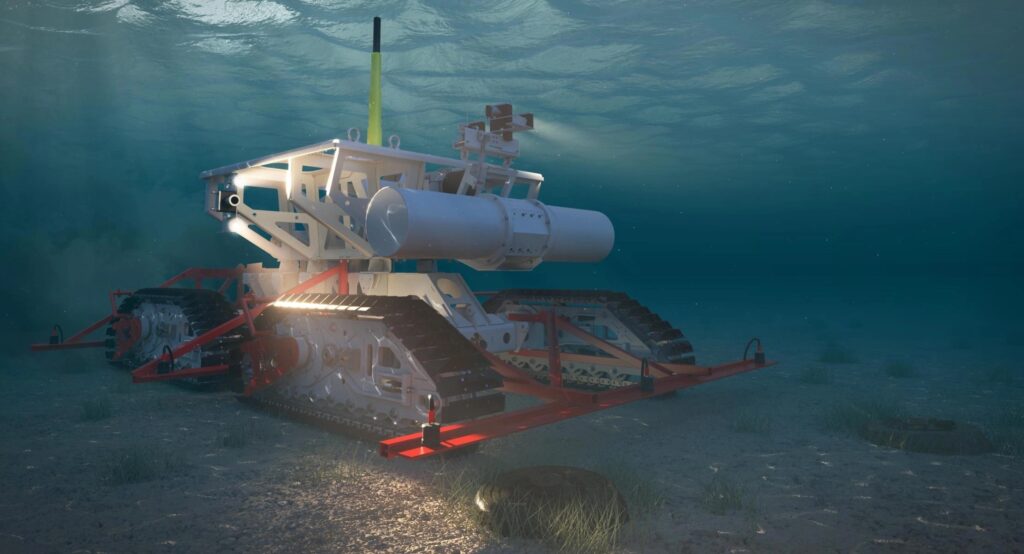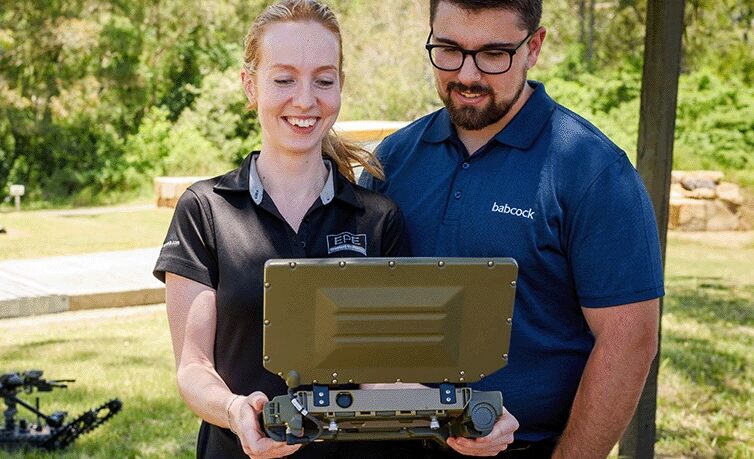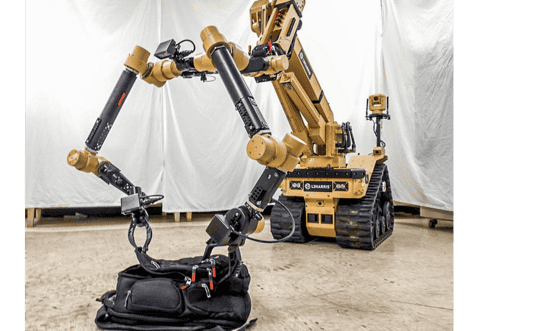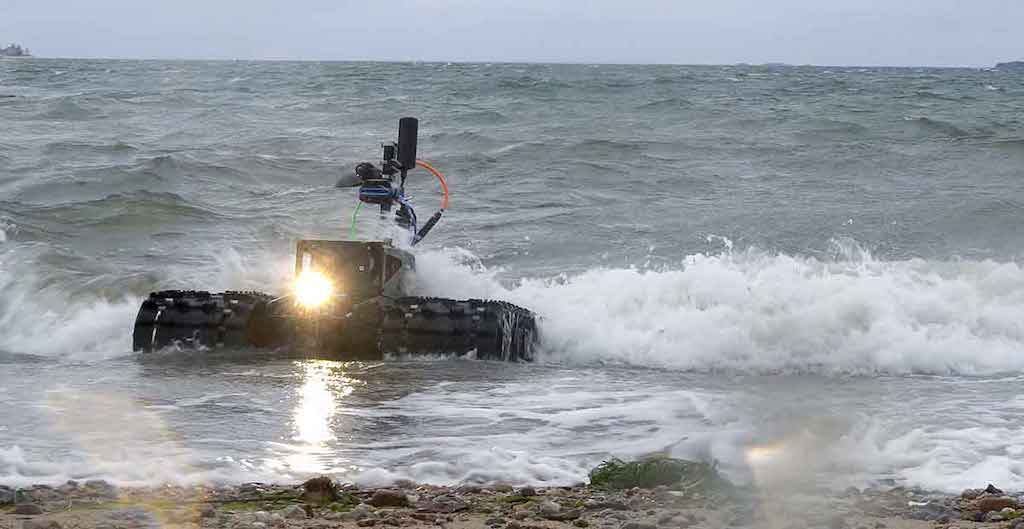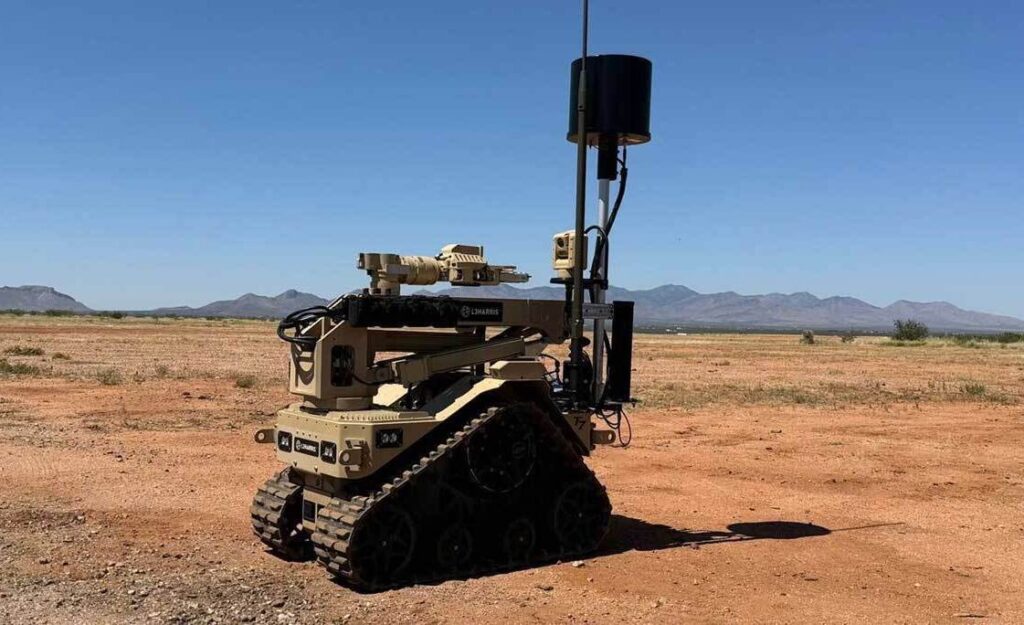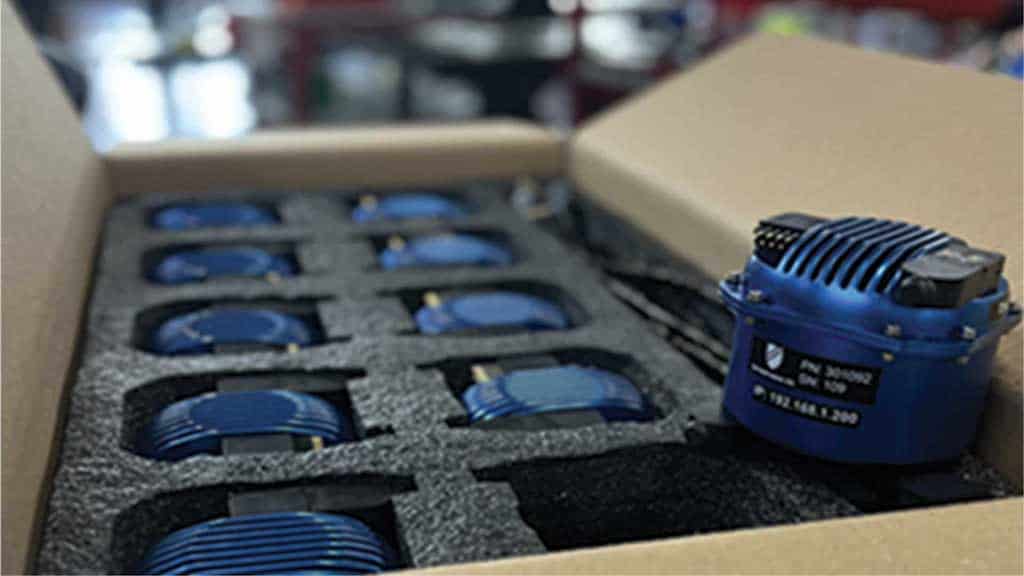Applications of EOD & Bomb Disposal Robots
EOD robots are deployed in a wide range of use cases across military, law enforcement, security and civilian sectors. Typical applications include:
Military Explosive Ordnance Disposal Robots
In military contexts, EOD robots are deployed to clear routes, inspect vehicles, and neutralize IEDs planted along roadways or near critical infrastructure. In active combat zones, explosive ordnance disposal army robots can play a vital role in protecting troops by remotely engaging with threats before personnel advance into contested areas. Military robots for army explosive ordnance disposal are often armored to withstand shrapnel and blast effects, ensuring survivability during high-risk missions.
Police Explosive Ordnance Disposal
Police forces and counter-terrorism units employ bomb disposal robots to respond to domestic threats, including suspicious packages, potential VBIEDs (Vehicle-Borne Improvised Explosive Devices), and bomb threats in public spaces. These robots help secure critical sites such as airports, transportation hubs, and large-scale public events. Rapid deployment and ease of use make compact EOD robots invaluable for an urban bomb squad or explosive ordnance disposal unit.
Humanitarian Demining
In post-conflict regions, EOD robots are used to safely clear landmines and UXO, facilitating the return of land for civilian use. Robots equipped with ground-penetrating radar and specialized digging tools can identify and safely remove explosive remnants of war (ERW), accelerating demining efforts while protecting demining personnel from unnecessary exposure.
Critical Infrastructure Protection
EOD robots are frequently employed to secure infrastructure such as power plants, government buildings, and communication hubs. By remotely inspecting and neutralizing threats, these robots help prevent potential disruptions to essential services.
Marine and Amphibious EOD Robots
EOD robots designed for marine and amphibious operations extend the capabilities of conventional bomb disposal systems into underwater and littoral environments, and are typically designed as tracked “crawler” systems. These robots are essential for naval forces, coast guards, and underwater demolition teams tasked with neutralizing naval mines, sunken ordnance, and underwater IEDs.
Navy Explosive Ordnance Disposal & Underwater EOD Robots
ROVs (remotely operated vehicles) and AUVs (autonomous underwater vehicles) may be used as underwater EOD robots, equipped with sonar, underwater cameras, and robotic arms capable of manipulating explosive devices at depth.
These robots are deployed from ships, submersibles, or shore-based platforms and can perform a range of tasks, from inspecting ship hulls to dismantling naval mines. Advanced propulsion systems allow for precise maneuverability in strong currents, ensuring accuracy during complex underwater operations.





